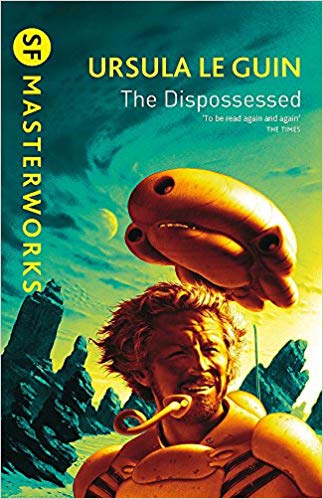Writing-exercise: Utopia and dystopia
Blog: Tom Graves / Tetradian
Yes, I do indeed write about other topics than enterprise-architecture! – in fact I’ve done a fair bit of work on fiction over the past couple of decades, as it seems one of the best ways to get complex ideas over in an easily-accessible way. (For one example, see my business-novel ‘Changes‘.)
A couple nights back I was asked to do a two-hour session for my local writing-group, Colchester WriteNight, on the theme of ‘Utopia and dystopia‘. The session seemed to go down well, so maybe the worksheet I devised for the session might be useful for you too. Share And Enjoy, perhaps?
1. Meanings of ‘utopia’ and ‘dystopia’
Dictionary-type definitions: ‘utopia’ is ‘perfect place’, ‘dystopia’ is ‘painful place’.
Exercise: What, to you, is utopia, or dystopia? Note down five keywords for each.
2. Utopia and dystopia as story-drivers
Utopia seems quite rare in literature, yet dystopia quite common – why is this? Perhaps the short-answer is in the apparent need for some form of conflict as the underpinnings for a story. If that’s so, then dystopia implies a rich source of struggles, whereas utopia implies no-conflict and hence no-story. Even so, a character’s drive towards some future utopia is a common basis for story. Utopia and dystopia can both be very personal…
Exercise: Choose an existing story. What are the drivers in your story? What is your protagonist’s ‘perfect world’? Where do your keywords for utopia and/or dystopia apply in your story?
3. Utopia and dystopia as background milieu
In many stories, the background milieu seems all but invisible; in others, though, it’s central to the story. For example, consider Pride & Prejudice: the milieu for the main characters in seems ‘ease-ful’, a near-utopia, which makes the more personal conflicts of the characters seem more prominent – even though there’s actually a continent-consuming war going on at the time. Compare that with Les Miserables, where the ongoing civil unrest affects everyone in the story; or 1984, where fear, denial and pretence pervade through everything and everywhere.
Exercise: What is different for your characters if you place them in an ‘ease-ful’ milieu? What happens if you place them in a war-zone?
4. An ambiguous utopia: utopia-for-some
‘An ambiguous utopia’: that’s the subtitle for Ursula le Guin’s sci-fi classic ‘The Dispossessed’.
In the story, the settlers of the moon Anarres intended it to be an anarchist utopia-for-all – in contrast to their homeworld Urras, where, as the Anarresti protagonist Shevek discovers, a seeming utopia for some is actually built upon a deep dystopia for most. Likewise the reality behind the romance of Pride & Prejudice is a similarly selective utopia-for-some, with most of the real dystopia carefully concealed from view; by contrast, Les Miserables is often undoubtedly dystopia-for-all…
Exercise: Who is included in your story’s would-be utopia? If not everyone, why are only some to be ‘The Chosen Ones’? Why and how are they privileged above others in this? By contrast, who is excluded? How and why are they excluded? What tensions could this create in the story?
5. From utopia to dystopia
A utopia can exist, perhaps – yet so rarely seems stable as such. If so, what is it that causes a utopia to collapse back to nothing-much, or even to a full-on dystopia? Sometimes it’s deliberate sabotage, or a collision with someone else’s idea of utopia, but more often there’s some key element that’s been ignored for too long, festering or fading into the background until its real importance is outlined in a catastrophic collapse. For example, in The Dispossessed, Anarresti society is starting to fragment as key people claim possession of ideas, priorities, privilege or power, and Urras undergoes endemic revolutions – though each leaves the underlying possessionism intact. The prior fate of Terra, our own world, serves mainly as a warning to all in the story…
Exercise: In your story, what ignored factors could cause a collapse from utopia (or would-be utopia) to dystopia? What must your protagonists or others do to identify what’s happening, and to prevent or recover from that collapse?
6. Utopia or dystopia – personal, social, or somewhere between?
Everything we’ve seen so far applies not just to whole societies, but often at a more personal scale: relationships, families, careers, quests and more. That tension between pain and perfection – abstract, concrete, real, imagined, perceived, experienced, feared, desired, past, present, future, whatever – is likely to be a driver in almost any story. Our aim here is to make that tension explicit – and use it as a conscious element in plot, character, storyline and more
Exercise: Choose a character, and a context for that character. What is the desired-world for that character, their utopia? What is their feared-world, their dystopia? To what extent is that utopia or dystopia within their grasp, or imposed upon them by the outside world, the broader milieu? What story-drivers arise from those desires and fears? And in reaching towards their utopia, what unnoticed, unacknowledged elements might drive your character back towards their dystopia? Write a short-story or story-fragment that expresses each of these themes.
Leave a Comment
You must be logged in to post a comment.









